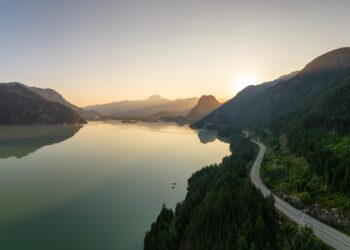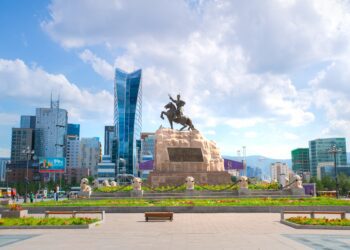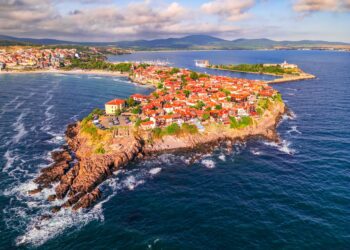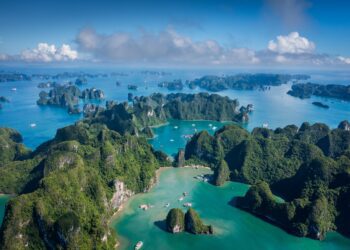1. Frictionless Travel
With COVID-19 naturally increasing the need for less human interaction throughout the consumer journey, frictionless travel has been accelerated and implemented with the rise of new technology providers — but, as 2021 has shown, travel is going to be a bumpy ride as visitors adapt to continuous uncertainty and change brought by the pandemic. The different national travel regulations and vaccine passports, as well as COVID-19 testing requirements, add to the initial challenges of navigating border crossings upon entry.
The anticipated volume of travellers, with reduced capacity in the system, will also bring new challenges in order to maintain a high standard for experiences. The customer experience is shaped across the entire end to-end journey, from booking to travel to the return home. Travellers now need more, not less, assistance with journeys carrying a disproportionate weight in consumers’ minds when they plan their next trip. Even seasoned travellers will have to adapt to new protocols, such as digital health certificates and safety measures.
Much like we have seen in retail sectors, as digital solutions replace services that can be easily automated, close operational gaps and streamline the customer journey, there will be greater emphasis placed on those services where personalized human interaction is more highly valued by travellers and which provide a differentiator for tourism operators.
Technology is moving the travel industry to a place where seamless travel experiences with limited, and even no, pain points are a reality. Destinations are using digital technology to increase connection, improve security and help drive a better experience for users. With disruption-predicting artificial intelligence (AI), personalized value-adds and real-time customer-centric technology, destinations can streamline the overall travel experience while introducing new solutions to collect data and better understand visitor behaviors in real time. The digitalization of the industry is placing more emphasis on customer experience — putting the user’s needs front and center — and raising the profile of the digital divide in Canada between highly connected urban centers and rural destinations. Canada’s plan for expanding communications infrastructure will greatly benefit rural and remote communities and tourism operators.
2. Domestic Travel
In the context of growing uncertainties overseas and restrictions on international travel, Canadians have been taking more trips within their own provinces and territories. Early travellers will be highly motivated to re-connect with family and friends after an extended time apart. This will be evident in both short-haul and long-haul domestic travel. While there’s much pent-up demand for travel, there’s also a significant portion of the population that’s not entirely comfortable straying far from home, creating opportunities for drive destinations and the creation of road trip itineraries for travellers willing to explore more deeply in a regional, provincial, territorial or national context. And while they’re not the biggest spenders, these travellers are potential long-term loyalists and ambassadors and could be enticed to places that visitors from afar wouldn’t consider. All of Canada is “local” to Canadian tourists and renewed sentiments of pride in the country could fuel enthusiastic travel in the short term.
3. Responsible Travel
The pandemic has enhanced the desire to connect in meaningful ways with places visited and to encourage local economies, while socio-environmental consciousness towards travel is also on the rise. Awareness of a traveller’s impact — on urban and wilderness environments and also on local populations — has led to reflection on the part of both destinations and those who enjoy them. In sensitive environments, tourism operators are clear in their desire for balanced growth that also promotes local cultures, preserves the heritage and supports community economic development. From smaller communities with stretched infrastructures in the north and rural areas, to issues of overcrowded destinations and bad behavior, people and places are rethinking the impact of visitation and how effects can be mitigated.
Travelling less often, but longer and deeper, is at the forefront of traveller mindsets today, but it is still a little early to see whether it will translate into meaningful action. There is growing consumer research supporting the idea of “responsible travel”16 which predicts travellers will want to lighten their footprint on destinations — supporting local economies, engaging with local cultures, reducing carbon emissions and enabling environmental conservation. Correspondingly, progressive destinations are examining the idea of “regenerative travel” wherein tourism contributes net benefits to its host communities — economically, socio-culturally, and environmentally. Destinations are taking action by creating a symbiotic engagement between the host community and the visitors they want to attract. As the pandemic wanes and visitors return, the tourism industry will need to re-establish its social license with residents.
4. Indigenous Connection
Indigenous experiences are of growing interest to Canadian and international travellers, which helps create sustainable employment for Indigenous communities while enriching travellers’ experiences through the sharing of culture, history and tradition. Research18 conducted by the Indigenous Tourism Association of Canada (ITAC) and Destination Canada shows that one in three Canadians are interested in Indigenous experiences and that historically, international visitors have an even higher level of interest (37%). With domestic travel on the rise, there’s an opportunity to build stronger connections with Indigenous Peoples, their communities and cultures through Indigenous tourism experiences.
Indigenous tourism has growth potential, but support will be required for businesses to recover and meet growing demand. ITAC reports19 that at least 1,889 Indigenous-owned businesses participate in the Indigenous tourism sector in Canada but that an estimated 674 businesses are at risk of closure in 2021 and 2022 due to the impact of COVID-19. According to Conference Board of Canada estimates, prior to March 2020, Indigenous tourism had generated an estimated $1.9 billion in annual revenue supporting 40,000 jobs. Today, revenue and jobs are reduced by more than half. With a great many Indigenous tourism businesses relying on international visitation, the pain of the pandemic has been deep. Rebuilding of this segment of the tourism sector will take years of concerted effort.
5. Ascendance of Communities
Pure growth in visitation can no longer be the primordial goal and the shift in focus towards the wellbeing and safety of local communities — urban, rural and Indigenous — has taken on new urgency. Destinations increasingly belong to the people who call them home.
Large and small municipalities are now taking a proactive approach to harness the benefits of tourism while minimizing its pressures. Pre-pandemic, we saw several international destinations ‘uninvite’ tourists as visitor volumes made life for locals untenable. The COVID-19 pandemic has accelerated the need for broader alignment with the community.
To develop long-term solutions, the true metric for tourism development must reflect an improved quality of life — creating economic prosperity, developing sociocultural vibrancy and growing environmental thrivability. A locals-first approach is shifting destination development and tourism marketing toward more sustainable goals, filtered through a lens of resident quality of life.
6. Health and Wellbeing
While safety and hygiene took center stage early in the pandemic, the growth of wellbeing and personal enrichment is one of many trends COVID-19 accelerated. After obsessing about health, hygiene, epidemic-level loneliness, decreased mental health and lack of connection — not to mention being collectively witness to an incomprehensible amount of death and loss — people are hungry for a sense of wellbeing and good feelings associated with travel, escape, rejuvenation and nature-based healthfulness. According to the Global Wellness Institute20, the wellness travel market is now estimated at $639 billion, with a pre-pandemic growth rate of 6.5% a year, which was more than twice the growth rate of tourism overall.
Post-COVID concerns with health and wellness will grow opportunities for destinations to capture part of a rapidly-growing industry and the broad definition of wellness is an opportunity for destinations to define it on their terms.
7. Wild for the Wilderness
For many travellers, the freedom of wild and wide-open spaces has been the perfect antidote to confinement, driving visitation to national parks and other nature-based destinations, even in traditional off-seasons. Many travellers and nature-explorers seek physically challenging adventures and retailers and other outfitters have created trips tailored to their customers’ tastes and experience. Others are looking for a more passive way to engage with the natural world, seeking easy day trips or trails they can visit with children. Canada is understood to be a place closely connected to the wild and can authentically tout the benefits of contact with nature, which have been much documented. The natural world’s ability to enhance wellness and provoke awe in visitors reduces anxiety and stimulates a sense of belonging to a grander story — even if, for some, that means “glamping” on the edge of a city. These are stories in Canada’s sweet spot.
8. Affluent Travel Boom
Affluent travellers are eager to spend their money on leisure trips, leading to a rebound of this segment. At the same time, the increase in savings is driving demand for legendary experiences in many demographics.
The affluent travel boom is one of the clearest signs of a spending surge by the wealthy that is likely to tilt the balance of recovery. In 2021, Google’s search interest in the phrase “luxury hotels” is at its highest since before 2006.21 In the US, high-income consumer spending rebounded fully in March and is now 11% above pre-COVID levels, according to data from Opportunity Insights; this finding is unsurprising, since high-income earners did not lose their jobs, and the savings rate among this demographic is 10-20% higher now than before the pandemic.
To meet the demands of high-value travellers, the development of unique high-quality tourism attractions and destinations in both cities and the wilderness is needed. The needs of affluent leisure travellers have evolved during the pandemic; while proper health protocols were considered a luxury early on, more sophisticated desires for wellbeing and other experiences are emerging. Bespoke, personalized travel experiences, including those that provide a sense of wellbeing and personal growth or enrichment and high “badge-value,” will be increasingly important to this market.
9. Great Resignation and Retirement
Post-pandemic, more people are rethinking their work-life balance than ever before. Younger and older generations have been quitting situations they find unsatisfactory, seeking new employment in companies that better support employees confronted with multiple demands that have been amplified by the pandemic.
The pace of boomer retirements has accelerated in 2020. In the first quarter of 2021, 30.3 million US baby boomers reported they were out of the labor force because of retirement, according to the Pew Research Center’s analysis of government data. That is 2.7 million more people than in the first quarter of 2020, a much bigger increase than the average growth of roughly 2 million retired boomers annually over the last decade. By 2025, people aged 65 and older will account for 11% of the world’s population and their international travel — the number of cross-border trips they take per year — will more than double. With time and money for travel, this segment remains a key audience for travel operators to consider.
10. Remote Work and Residential Tourism
The office environment reality has radically shifted since the onset of the pandemic. Remote work, made possible during the pandemic, has worked well for many companies and employees, providing an easy and less expensive means to conduct meetings and to avoid health concerns associated with travelling during the pandemic. Remote work may become a way of life for some. People are not just working from home, but working from a variety of what might be considered vacation destinations, using innovative platforms to adapt. The divide between live, work and play is smaller than ever. As a result, remote workers are increasingly a new visitor segment in many regions. Destinations need to be prepared for this new traveller and partner with other industries to provide a different kind of visitor experience beyond what’s offered for short-term stays. Remote visas and other programs have been implemented by destinations (at the country, but also city-level) to attract remote workers or so-called digital nomads to visit, work, play — and spend — for extended periods.
(Courtesy Destination Canada)












